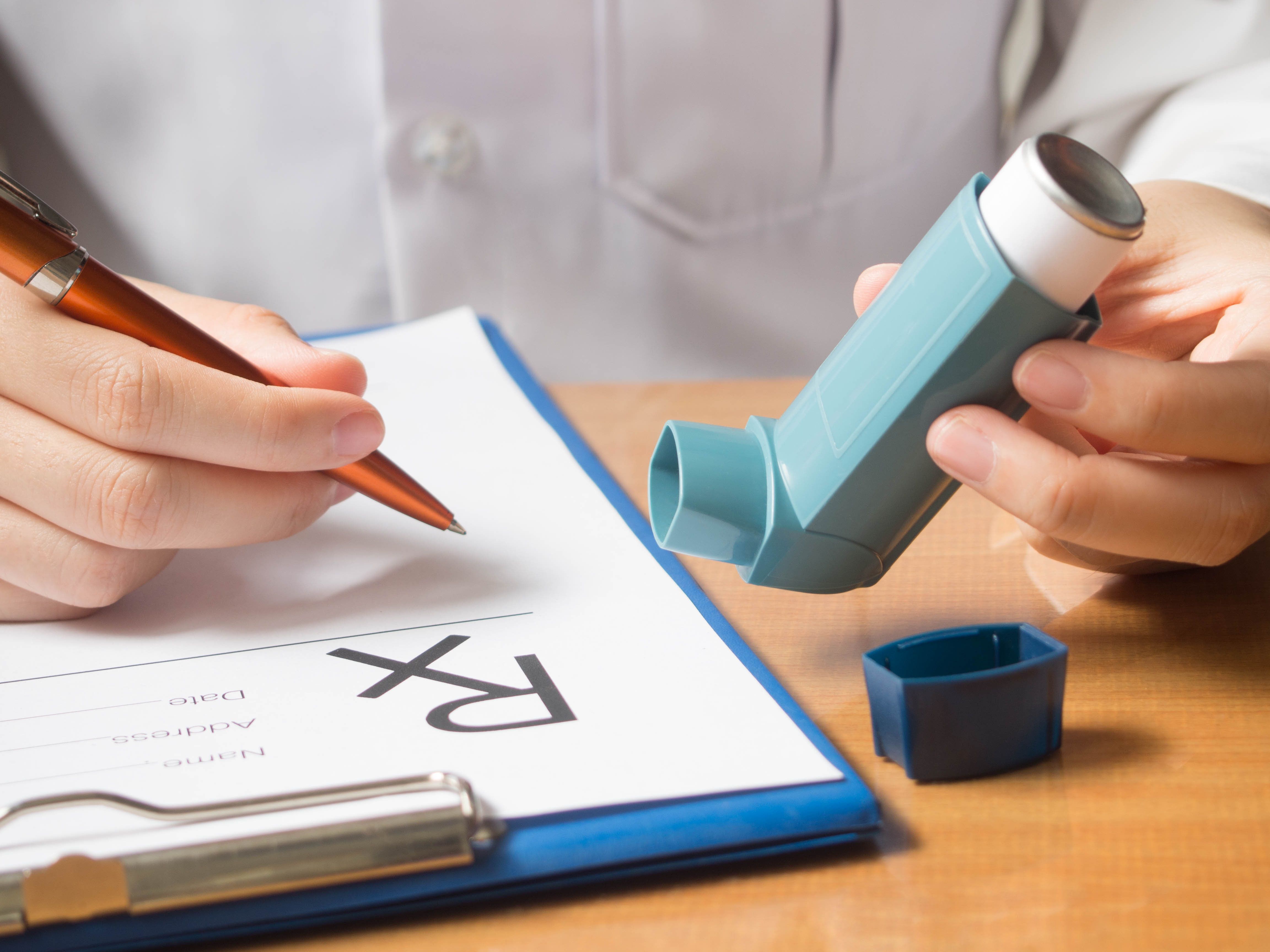- Center on Health Equity & Access
- Clinical
- Health Care Cost
- Health Care Delivery
- Insurance
- Policy
- Technology
- Value-Based Care
Bronchial Thermoplasty Improves Ventilation Heterogeneity in Severe Asthma
Significant improvements were seen in ventilation heterogeneity in patients with severe asthma after 12 months of bronchial thermoplasty.
Patients with severe asthma experienced clinical benefits of bronchial thermoplasty (BT) measured by improvements in ventilation heterogeneity assessed by functional respiratory imaging (FRI), according to a prospective study is published in the Journal of Asthma and Allergy.

Most patients with severe asthma already undergo chest computed tomography (CT) to exclude other differentials, which means performing BT to study lung ventilation is a minor inconvenience for these patients, the authors explained.
“Moreover, successful detection of changes in ventilation heterogeneity using FRI [functional respiratory imaging] may provide a means of assessing response to therapy and identifying suitable patients, not only in the application of BT but also other relevant interventions," they wrote.
To the researchers’ knowledge, this study is the first of its kind to measure changes in ventilation heterogeneity using FRI in patients undergoing BT.
Patients were prospectively recruited from a tertiary hospital severe asthma clinic, who were aged 18 years and older, had diagnosis of severe asthma, and were scheduled for a clinically indicated BT by their treating physician.
Patients with altnerative respiratory conditions, including chronic obstructive pulmonary disease or bronchiectasis, as well as females who were pregnant or lactating were excluded from the study.
A total of 18 patients were recruited for the study and were assessed at baseline, 4 weeks after treatment of the left lung, and 12 months after treatment of the right lung.
Additionally, the researchers assessed short-acting β-agonist (SABA) and oral prednisolone (OCS) use, asthma control questionnaire (ACQ-5) score, and exacerbation history. Furthermore, patients underwent lung function tests and CT, with ventilation parameters including interquartile distance (IQD) using FRI.
Significant improvements were observed 12 months after BT in SABA and OCS use, ACQ-5, and the number of OCS-requiring exacerbations, with median (IQR) ACQ score reduced from 3.3 (2.7-4.2) to 1.9 (1.1-2.7); P < .001.
SABA rescue therapy was reduced from a median of 11 (8-20) puffs per day to 2.5 (1.3-6.8) puffs per day (P < .001). Additionally, all 15 patients who required maintenance OCS at baseline reduced their daily OCS dose from 7.5 (5-25) mg per day to 4.5 (0-10) mg per day (P = .01).
Ventilation heterogeneity was significantly improved after treatment of the left lung (0.18 ± 0.04 vs 0.20 ± 0.04; P = .045), with treatment effect persisting up to 12 months later (0.18 ± 0.05 vs 0.20 ± 0.04; P = .028). Ventilation heterogeneity also improved after treatment of the right lung but did not reach statistical significance (0.18 ± 0.05 vs 0.19 ± 0.04; P = .06).
However, the researchers acknowledged some limitations to the study, including a small sample size, being conducted in a single center, and not having a comparative control group.
Despite these limitations, the researchers believe there are clinical benefits of BT, observed in improvements in ventilation heterogeneity as measured by FRI.
“In this study, we demonstrated an improvement in ventilation heterogeneity, as reflected by a reduction in IQD, along with clinical improvements after BT,” wrote the researchers. “These findings are consistent with mathematical modeling of the physiological behavior of the asthmatic lung when subjected to BT, namely that improvements in ventilation heterogeneity are expected, particularly at higher levels of ASM [airway smooth muscle] activation.”
Reference
Foo CT, Donovan GM, Thien F, et al. Bronchial thermoplasty improves ventilation heterogeneity measured by functional respiratory imaging in severe asthma. J Asthma Allergy. 2024;17:399-409
doi:10.2147/JAA.S454951
Integrated Care for Chronic Conditions: A Randomized Care Management Trial
December 3rd 2025The authors sought to understand the differential impact of payer-led community-based care management approaches on stakeholder-oriented outcomes for publicly insured adults with multiple chronic conditions.
Read More
Managed Care Reflections: A Q&A With A. Mark Fendrick, MD, and Michael E. Chernew, PhD
December 2nd 2025To mark the 30th anniversary of The American Journal of Managed Care (AJMC), each issue in 2025 includes a special feature: reflections from a thought leader on what has changed—and what has not—over the past 3 decades and what’s next for managed care. The December issue features a conversation with AJMC Co–Editors in Chief A. Mark Fendrick, MD, director of the Center for Value-Based Insurance Design and a professor at the University of Michigan in Ann Arbor; and Michael E. Chernew, PhD, the Leonard D. Schaeffer Professor of Health Care Policy and the director of the Healthcare Markets and Regulation Lab at Harvard Medical School in Boston, Massachusetts.
Read More
